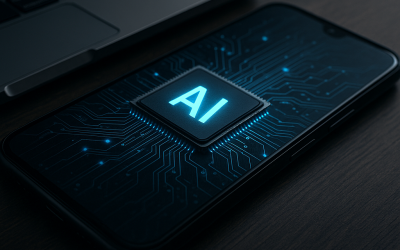Anthropic’s latest Opus release has reignited the debate about what’s really holding back AI: is it the technology itself, or the legal and regulatory risks that surround it? In this article, we’ll cut through the noise, examine the actual constraints facing advanced AI, and clarify what strategic leaders should be watching as the industry evolves.
The Real Bottleneck: Legal Risk, Not Technical Feasibility
Anthropic’s Opus model is a technical milestone—its ability to process vast contexts, reason across complex domains, and generate reliable outputs is no longer a theoretical promise but a deployed reality. Yet, despite this leap, the model’s release is tightly controlled, with usage restrictions, redacted capabilities, and a cautious rollout. The question isn’t whether the technology works; it’s whether the legal and regulatory landscape allows it to be used to its full potential.
Let’s break down the core issue: AI progress is not being throttled by a lack of technical innovation, but by the mounting legal and compliance risks that surround deployment. Here’s what’s driving this:
- Copyright and Data Ownership: The largest language models are trained on vast swathes of the internet, much of which is copyrighted or proprietary. Legal challenges—like those from news organizations, publishers, and software vendors—are forcing AI companies to limit training data, redact outputs, and build expensive compliance layers.
- Regulatory Uncertainty: With governments worldwide scrambling to draft AI regulations, companies face a moving target. The EU’s AI Act, US state-level privacy laws, and global data sovereignty rules all add friction and risk to launching new capabilities, especially for models that can generate or summarize sensitive information.
- Product Liability and Safety: As AI systems become more capable, the risk of harmful outputs—misinformation, defamation, or even code that causes real-world damage—rises. Legal exposure from these risks forces vendors to throttle model access, layer on safety filters, and sometimes neuter the very features that make the technology valuable.
Anthropic’s Opus release is a case study in this dynamic. The model’s technical prowess is evident, but its deployment is shaped almost entirely by legal risk mitigation. This is not unique to Anthropic—OpenAI, Google, and Meta are all following the same playbook. The net result: we’re not seeing the limits of AI’s capabilities, but the limits of what’s legally safe to release.
Strategic Consequences: Winners, Losers, and the Path Forward
Understanding that legal risk is the bottleneck—not technology—reshapes how strategic leaders should approach AI adoption, investment, and policy. Here’s what matters:
- Incumbents vs. Upstarts: The legal and regulatory burden favors large incumbents with deep pockets and compliance teams. Smaller, more agile players may have superior technology, but lack the resources to navigate the legal minefield. Expect further consolidation as legal complexity becomes a moat.
- Geopolitical Fragmentation: As regions diverge on AI regulation, global deployment becomes harder. Models will be geo-fenced, capabilities will be uneven, and the “AI divide” will widen. Companies must architect for compliance by design, not as an afterthought.
- Innovation Moves Underground: The most advanced capabilities—autonomous agents, real-time code generation, unrestricted data access—will emerge in less regulated jurisdictions, or in open-source communities that operate outside the reach of Western legal systems. This creates a two-tiered ecosystem: sanitized, compliant AI for the mainstream, and a shadow market for those willing to take on risk.
- Operational Implications: For technical leaders, the mandate is clear: build compliance and risk management into the AI pipeline from day one. This means robust data provenance tracking, automated redaction tools, and real-time monitoring of outputs for legal exposure. It also means being ready to pivot as regulations shift—flexibility is now a core technical requirement.
The companies that win in this environment will not be those with the flashiest demos, but those who can navigate the legal minefield while still delivering real value. That means investing in:
- Cross-functional teams: Legal, compliance, engineering, and product must work together from the outset—not as a bolt-on after launch.
- Dynamic risk assessment: Systems that can adapt to new legal precedents and regulatory changes in real time, not just static checklists.
- Transparent governance: Clear documentation of model training data, decision logic, and output monitoring—not just for regulators, but for customers and partners as well.
Ignore these realities, and you’re building on sand. Embrace them, and you can turn legal risk into a competitive advantage.
Conclusion: The Future of AI Is Decided in the Courts, Not the Lab
Anthropic’s Opus release is not a story about technical limits—it’s a warning shot about the primacy of legal and regulatory risk in shaping the future of AI. For leaders, the message is clear: the next wave of AI breakthroughs will be determined less by model size or clever algorithms, and more by the ability to navigate, anticipate, and shape the legal environment. The real race is not for technical supremacy, but for regulatory mastery.



0 Comments